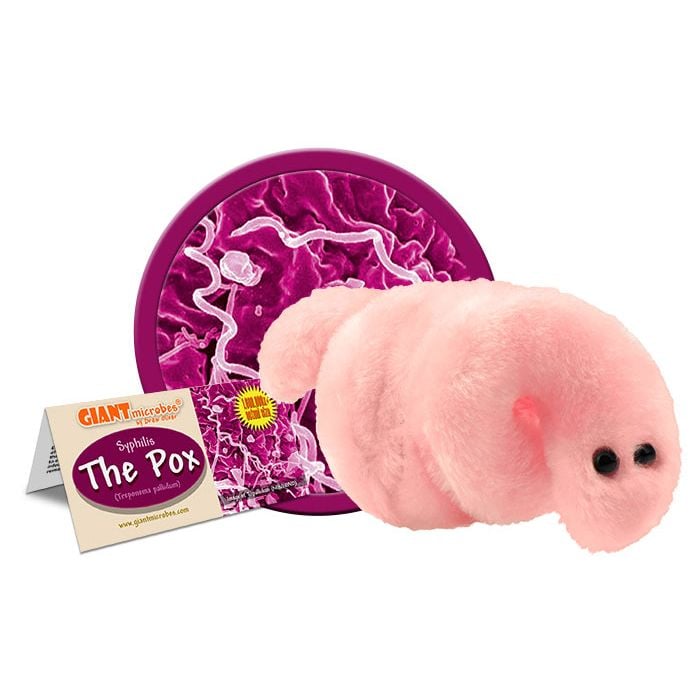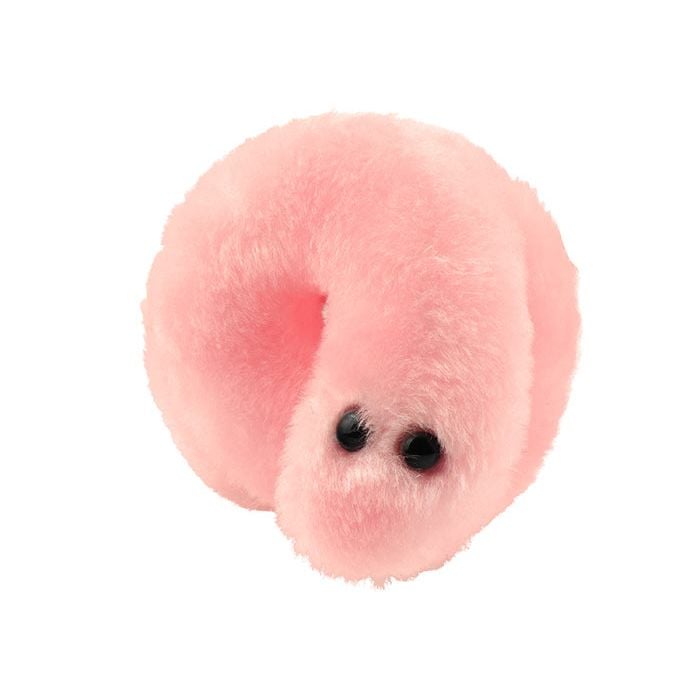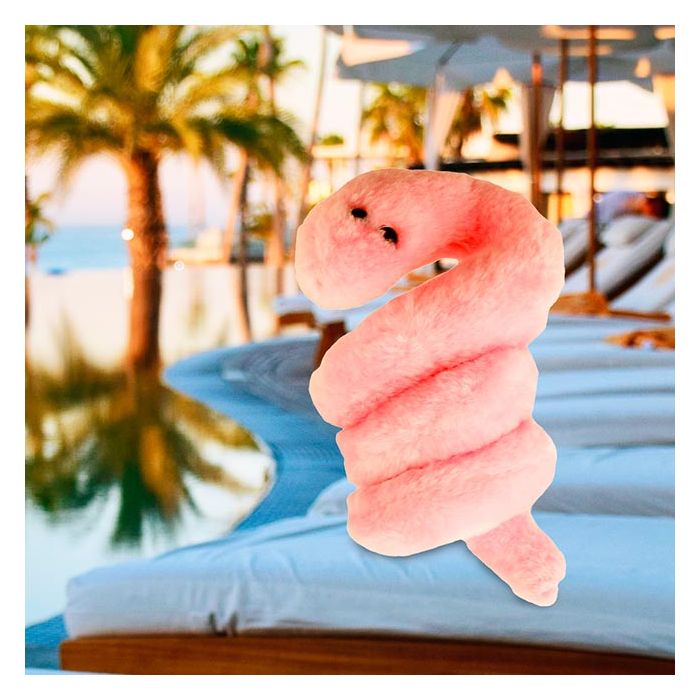Pox - Syphilis (Treponema pallidum)
Spread awareness and learn the facts about Syphilis and Sexually Transmitted Infections. GIANTmicrobes Pox helps start important discussions about reproductive health and serves as a reminder to act smart and be safe.
A unique, memorable and fun gift for friends and loved ones and anyone with a healthy sense of humor! Educational tool for students, educators, nurses, doctors, public health experts, scientists and reproductive health professionals. Soft, cuddly and memorable, includes an educational card with facts about this STI.
Size: 18 x 10 x 8cm
Product Details
Additional Information
| Sizes | Giantmicrobes are based on actual microbes, cells, organisms and other critters, only 1,000,000 times actual size! Gigantic (GG) 40-60cm XL (XL) 25-38cm Original (PD) 12-20cm Minis (MM) 5-10cm each Keychain (KC) 5-10cm with clip |
|---|---|
| Materials | Plush from all new materials. Stuffed with polyester fiber fill. Surface washable: sponge with water & soap, air dry. |
| Packaging | Each plush microbe includes a printed card with fun, educational and fascinating facts about the actual microbe or cell. |
| Safety | Every product meets or exceeds U.S. and European standards for safety. For ages 3 and up. |
All about Pox - Syphilis (Treponema pallidum)
FACTS: The pox (or Great Pox, as distinguished from the “lesser” poxes such as chickenpox and smallpox) burst onto the historical scene in a 1494 epidemic that occurred in the French army, then fighting in Naples. The Italians promptly called it the French disease. The French called it the Italian (or Neapolitan) disease. As there were Spanish soldiers serving in the French army – recently returned from the New World, where some hypothesize the disease originated – some dubbed it the Spanish disease; as it spread across Europe, it became the Portuguese disease, the Polish disease, the Russian disease, and so on. (The name “syphilis” comes much later from the name of a shepherd cursed by Apollo in a 1530 poem by Italian physician Girolamo Fracastoro.)
Why was the credit for the pox shared so generously? Well, after an incubation period of several weeks to several months, chancres (“shan-kers”) appear on a victim's body. These sores persist for a month or so, and are generally followed by a skin rash and weeks or months of flu-like symptoms (during which period the disease is most contagious). A weeks-to-decades-long latency period follows, and then the infamous syphilitic degeneration: spinal deformities causing a shuffled-walk, cardiovascular damage causing “de Musset’s sign” (the head-bobbing first observed in Parisian prostitutes), and brain damage culminating in insanity and death.
Early treatments such as mercury and arsenic have given way to effective cures such as penicillin and azithromycin, greatly reducing the disease’s prevalence. Nevertheless, resistant strains are starting to emerge. As syphilis infections increase the risk of incurable H.I.V. infections by up to 5 times, this international microbe of mystery remains a significant public health hazard.
| Name | Named after the character Syphilus from the Italian novel, “Syphilis sive Morbus Gallicus”, written in 1530. Syphilus was a shepherd who offended Apollo, resulting in Apollo cursing people with syphilis disease. |
|---|
| Actual Size | 0.18 micrometers thick and 20 micrometers long. That’s about 10 thousand times smaller than a string of spaghetti! |
|---|
| Where It Lives | Syphilis is caused by spiral-shaped bacteria called Treponema pallidum. It can be passed from person-to-person during unprotected sex, or from pregnant mothers to their babies. |
|---|
| Symptoms | Causes ulcers around the infection site, known as chancres (pronounced shankers). If left untreated, it can spread through the body causing rash, joint pain, inflammation, and fatigue. In rare cases, it can spread to the brain and heart years after the initial infection causing fatalities. |
|---|
| Cure | Antibiotic injections with penicillin or doxycycline. |
|---|
| History |
1905: German scientists Fitz Schaudinn and Erich Hoffman were the first to identify the bacteria. Big Outbreaks: 1494: The first recorded outbreak happened among the French troops during an invasion of Naples, Italy. Recent Outbreaks: 2008: Syphilis spreads rapidly among men who have sex with men and continues to rise. |
|---|
| Fascinating Facts |
1932 – 1972: The Tuskeegee Experiment withheld effective treatment to nearly 400 study participants with Syphilis based on their race so that researchers could observe the natural progression of the disease when left untreated. In light of this event, President Eisenhower signed the National Research Act into law to protect human rights during research experiments. Famous people who died of it: Good or bad, rich or poor, old or young, Syphilis knows no boundaries. Historical figures of all shapes and sizes fell victim to this disease—from creative cats like Ludwig van Beethoven, Edouard Manet and Charles Baudelaire, to powerful leaders like Henry VIII and Adolf Hitler, and even an infamous thug like Al Capone. |
|---|















